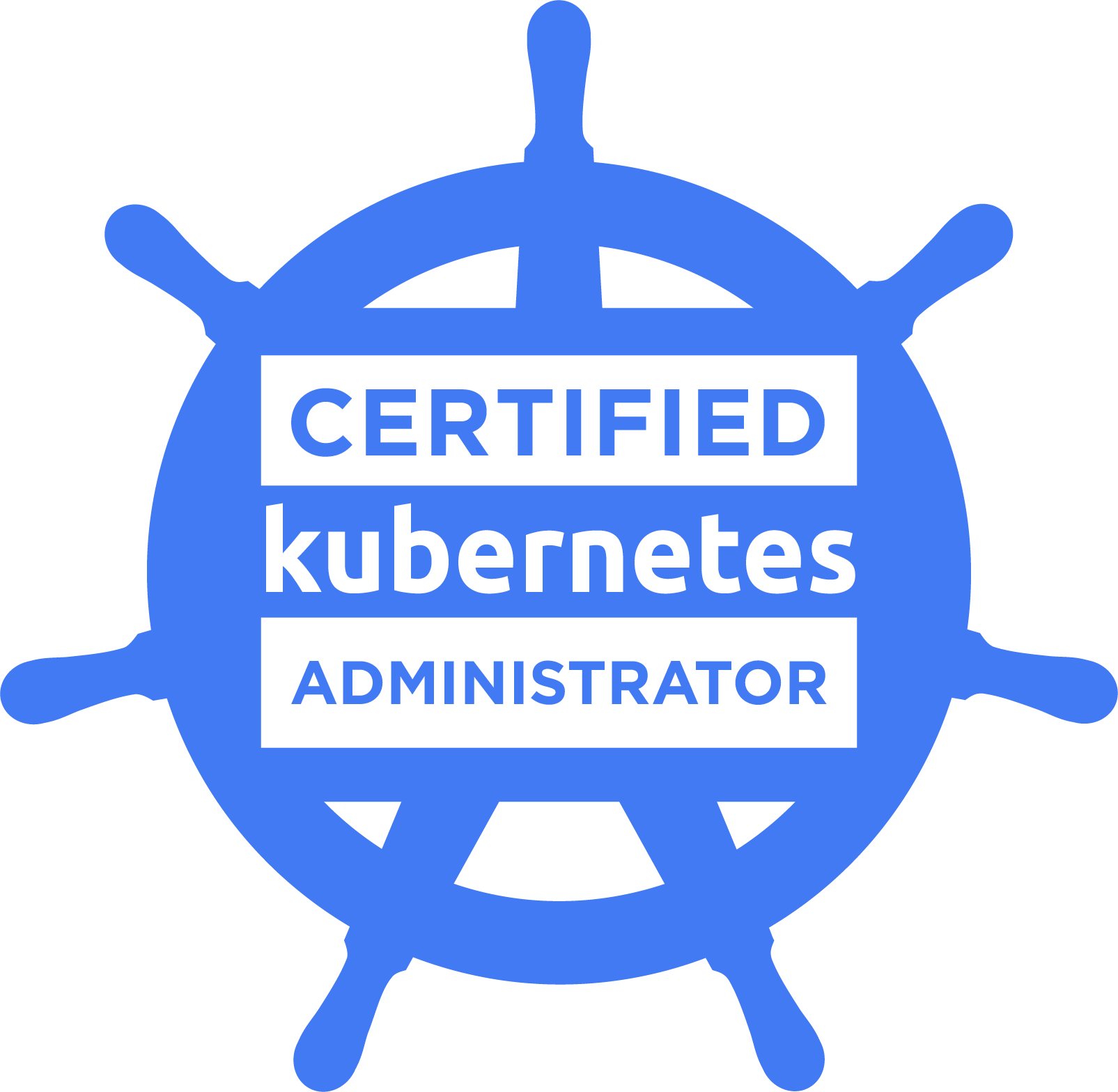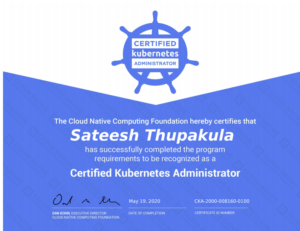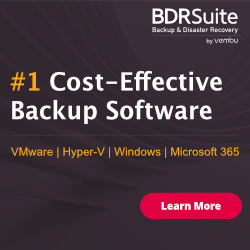
My Cloud-Native Applications journey continues with another milestone named “CKA v1.18” which is the entry pass to NexGen VMware Administrators world. You may already know the VMware vSphere 7.x is tightly coupled with the Kubernetes Platform via VMware Tanzu, vSphere 7 with Kubernetes & VMware Cloud PKS. VMware also encourages everyone to learn K8 concepts with free courses published at KubeAcademy from VMware. There are two certification paths available, Certified Kubernetes Administrator (CKA) & Certified Kubernetes Application Developer (CKAD). The purpose of the Certified Kubernetes Administrator (CKA) certification is to provide assurance that certification holders have the skills, knowledge, and competency to perform the responsibilities of Kubernetes Administration. The online exams consist of a set of performance-based tasks (problems) to be solved on the command line. CKA exam consists of 24 tasks and expected to take 3 hours to complete.
There are lot of blog posts and courses available for CKA/CKAD exams but which one to choose to fit your needs. Let’s start with the exam curriculum which got updated less than a month ago. One common question: which section is important? but to reach a 74% passing score, we don’t have any option to ignore any of the sections. Core concepts is a major one with POD/Deployments/Services covered with additional concepts like storage, network & security.
This CKA exam curriculum includes these general domains and their weights on the exam:
● Application Lifecycle Management 8%
● Installation, Configuration & Validation 12%
● Core Concepts 19%
● Networking 11%
● Scheduling 5%
● Security 12%
● Cluster Maintenance 11%
● Logging / Monitoring 5%
● Storage 7%
● Troubleshooting 10%
Here is my recent entry pass to Cloud-Native applications and I strongly recommend plan your journey with Docker/Kubernetes technologies without any delay.
Tips & Tricks:
-
Purchase the course from Udemy Certified Kubernetes Administrators Certification with live practice tests right in your browser – CKA
-
Lectures alone won’t help you clear the certification. The Kubernetes Certification is a practical hands-on exam. You need hands-on experience, you need to get fast and you need practice.
-
Make your self familiar with creating POD/Deployment/Service from Imperative Commands (v1.18 kubectl commands are changed)
-
When you need to create YAML file use below method to avoid any Indentation issues with YAML editing
Cat >> <yaml file> <<EOF
Copy from K8 doc
> EOF
-
Create bookmarks from this file “BOOKMARKS“
-
Join the slack groups #ckaslack
-
ps -elf | grep (kubelet | etcd | kube-apiserver) is a useful command to get the config/certificates path
-
Read carefully the Information provided within the questions with the i mark. They would provide very useful hints in addressing the question and save time.
-
Cluster installation hardway is better but kubeadm way also helps
-
There are easy – medium – hard questions and make sure you attempt all easy/medium ones first then finally hard ones
-
The exam has six clusters and make sure context change command executed before you solve the problem “kubectl config set-context –current ___”
-
Don’t panic they don’t ask you tricky questions – read the questions and answer as needed.
-
Results will be emailed 36 hours from the time that the exam was completed. Breask are allowed but timer/clock won’t stop.
“Be social and share this on social media, if you feel this is worth sharing it”



